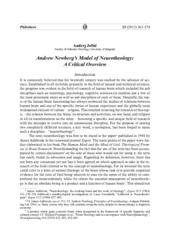Andrew Newberg’s Model of Neurotheology: A Critical Overview
Чланак у часопису (Објављена верзија)
Метаподаци
Приказ свих података о документуАпстракт
It is commonly believed that the twentieth century was marked by the advance of science. Established in all its ields, primarily in the ield of natural and technical sciences,
the progress was evident in the ield of research of human brain which included the sub
disciplines such as: neurology, psychology, cognitive sciences (to mention just a few of
the most prominent ones) as well as sub disciplines of each of these. Naturally, the topic of the human brain functioning has always embraced the studies of relations between
human brain and one of the speciic forms of human experience and the globally most
widespread element of culture – religion. This resulted in having the research of this topic – the relation between the brain, its structure and activities, on one hand, and religion
in all its manifestations on the other – becoming a speciic and unique ield of research
with the attempts to evolve into an autonomous discipline. For the purpose of uniting
two completely different ...sciences, a key word, a neologism, has been forged to name
such a discipline – “neurortheology”.
Извор:
Philotheos: International Journal for Philosophy and Theology, 2013, 13, 261-278Издавач:
- Gnomon: Centar za humanistiku
Колекције
Институција/група
IFDTTY - JOUR AU - Jeftić, Andrej PY - 2013 UR - http://rifdt.instifdt.bg.ac.rs/123456789/2601 AB - It is commonly believed that the twentieth century was marked by the advance of science. Established in all its ields, primarily in the ield of natural and technical sciences, the progress was evident in the ield of research of human brain which included the sub disciplines such as: neurology, psychology, cognitive sciences (to mention just a few of the most prominent ones) as well as sub disciplines of each of these. Naturally, the topic of the human brain functioning has always embraced the studies of relations between human brain and one of the speciic forms of human experience and the globally most widespread element of culture – religion. This resulted in having the research of this topic – the relation between the brain, its structure and activities, on one hand, and religion in all its manifestations on the other – becoming a speciic and unique ield of research with the attempts to evolve into an autonomous discipline. For the purpose of uniting two completely different sciences, a key word, a neologism, has been forged to name such a discipline – “neurortheology”. PB - Gnomon: Centar za humanistiku T2 - Philotheos: International Journal for Philosophy and Theology T1 - Andrew Newberg’s Model of Neurotheology: A Critical Overview VL - 13 SP - 261 EP - 278 DO - 10.5840/philotheos20131323 ER -
@article{
author = "Jeftić, Andrej",
year = "2013",
abstract = "It is commonly believed that the twentieth century was marked by the advance of science. Established in all its ields, primarily in the ield of natural and technical sciences,
the progress was evident in the ield of research of human brain which included the sub
disciplines such as: neurology, psychology, cognitive sciences (to mention just a few of
the most prominent ones) as well as sub disciplines of each of these. Naturally, the topic of the human brain functioning has always embraced the studies of relations between
human brain and one of the speciic forms of human experience and the globally most
widespread element of culture – religion. This resulted in having the research of this topic – the relation between the brain, its structure and activities, on one hand, and religion
in all its manifestations on the other – becoming a speciic and unique ield of research
with the attempts to evolve into an autonomous discipline. For the purpose of uniting
two completely different sciences, a key word, a neologism, has been forged to name
such a discipline – “neurortheology”.",
publisher = "Gnomon: Centar za humanistiku",
journal = "Philotheos: International Journal for Philosophy and Theology",
title = "Andrew Newberg’s Model of Neurotheology: A Critical Overview",
volume = "13",
pages = "261-278",
doi = "10.5840/philotheos20131323"
}
Jeftić, A.. (2013). Andrew Newberg’s Model of Neurotheology: A Critical Overview. in Philotheos: International Journal for Philosophy and Theology Gnomon: Centar za humanistiku., 13, 261-278. https://doi.org/10.5840/philotheos20131323
Jeftić A. Andrew Newberg’s Model of Neurotheology: A Critical Overview. in Philotheos: International Journal for Philosophy and Theology. 2013;13:261-278. doi:10.5840/philotheos20131323 .
Jeftić, Andrej, "Andrew Newberg’s Model of Neurotheology: A Critical Overview" in Philotheos: International Journal for Philosophy and Theology, 13 (2013):261-278, https://doi.org/10.5840/philotheos20131323 . .



